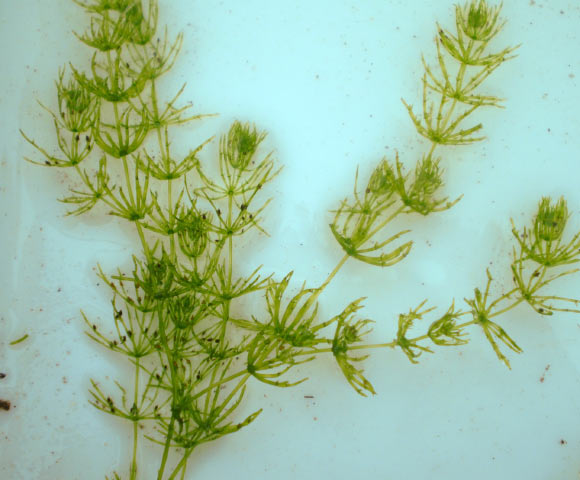An international team of researchers, led by Kanazawa and Kobe Universities, Japan, and the Universities of Marburg and Freiburg, Germany, has sequenced and analyzed the genome of Chara braunii, a freshwater green alga closely related to land plants. By comparing Chara’s genome to multiple land plant genomes, the scientists were able to identify many important genes that originated in a common ancestor shared by Chara and land plants. The results appear in the journal Cell.
Land plants, which split from their aquatic relatives 500 million years ago, are an extraordinarily diverse group of living organisms.
For plants, survival on dry land required some new evolutionary innovations. For instance, they had to develop root systems that can absorb nutrients from soil.
They also needed strong stems that can support their own weight without help from the buoyancy of water.
Land plants evolved to deal with these and many other environmental challenges, resulting in their worldwide abundance today.
To better understand the genetic adaptations that made this transition so successful, the team decoded the genome of Chara braunii.
“It’s great to finally have a genome from an alga closely related to land plants. This information will help us understand which land plant functions were truly novel,” said co-author Professor Charles Delwiche, a researcher at the University of Maryland.
Chara braunii belongs to a division of plants called Charophytic algae, which are the closest living relatives of land plants.
As one of the first Charophytic algae to have its genome sequenced, Chara braunii has yielded important information on how land plants evolved from their aquatic ancestors.
“Our data show that a number of genes previously considered typical for terrestrial plants can already be found in these algae,” said senior author Professor Stefan Rensing, from the University of Marburg.
“This means that some important processes that occur when land plants grow are much more ancient than previously believed. In fact, some of these characteristics evolved before land plants even existed.”
“The genes of the Chara braunii alga comprises numerous evolutionary innovations that have been ascribed only to land plants so far,” said co-author Professor Rainer Hedrich, from the University of Wuerzburg.
Chara braunii possesses all of the genes required to detect the presence of the plant hormone ethylene. This ability is present in all land plants where ethylene plays a wide variety of roles, from promoting seed germination to signaling when fruit should ripen.
“Given the huge number of roles ethylene has in plants, we want to know when the ethylene signaling pathway originated,” said co-author Professor Caren Chang, from the University of Maryland.
“Because we found that Chara braunii has all of the specialized genes for ethylene signaling, it means that this ability is even older than Chara braunii.”
Although Chara braunii can respond to ethylene, the team also discovered that the species lacks key steps of the cellular pathway needed to make the hormone.
Some other features that Chara braunii shares with land plants include: egg and sperm cells, which allow plants to make seeds that can disperse over land; tip growth, which allows plants to develop complex roots to get nutrients out of soil; and some of the cellular machinery important for formation of the plant cell wall, which allows plants to support their own weight.
“Most genes that play a role in absorbing and distributing nutrients are also found in the genome of Chara braunii,” said co-author Professor Dirk Becker, from the University of Wuerzburg.
“In contrast, high affinity transporters for potassium as exist in roots of land plants have not yet been detected in Chara. This could mean that potassium is more easily available in water than in soil.”
_____
Tomoaki Nishiyama et al. 2018. The Chara Genome: Secondary Complexity and Implications for Plant Terrestrialization. Cell 174 (2): 448-464; doi: 10.1016/j.cell.2018.06.033








